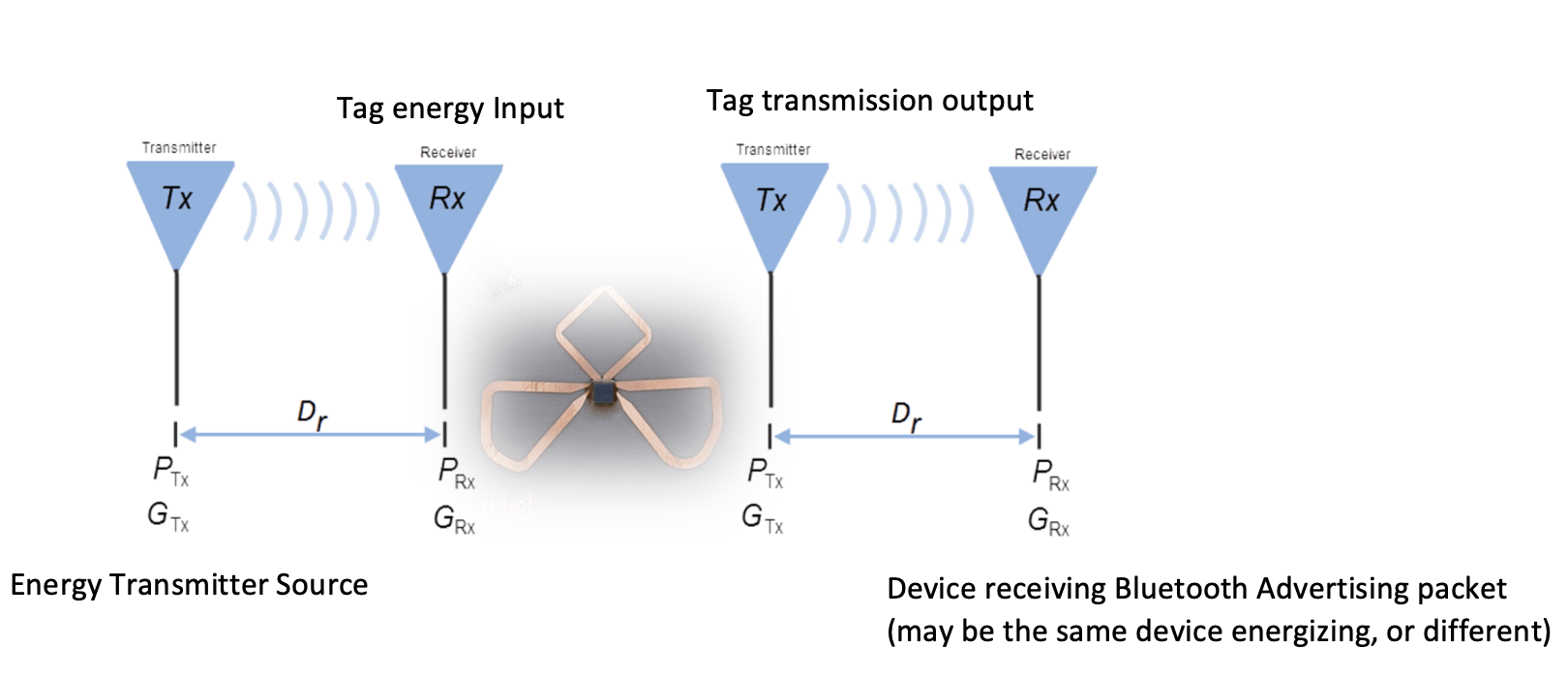



Nano-Watt Computing - An Overview





1 Overview
The Internet of Things is extending connectivity to more and more devices. Wireless is expanding beyond smartphones, laptops, and smart speakers and becoming an essential component of products like light bulbs, thermostats, door locks, and doorbells. Data traffic over wireless networks has multiplied over the last decade, driven by the growth of streaming services and applications like social networking. In this context where wireless Radio Frequency (RF) activity is more and more pervasive and abundant, recycling the RF energy that surrounds us wherever we go, energy that would not otherwise be used, is appealing because of its simplicity, economy, and sustainability. With RF activity continuously growing as more and more device become connected, this builds the foundation for a self-sustaining source of power allowing many more products to transmit useful information about themselves and the way consumers interact with them.
2 Wiliot Energy Harvesting
There are two approaches to harvesting RF energy: RF scavenging and intentional RF energy transfer. The first mode of operation taps into existing sources of energy from devices being used without the intention of generating energy, the energy available over-the-air is intermittent and unpredictable. The resulting applications this mode can enable are stochastic in nature.
In the latter approach, the source of energy is deterministic in terms of power levels and time, with a specific duty cycle pattern delivered from an infrastructure planned to provide it. As such the resulting energy output is also more predictable, and the transmission of packets from radio powered are transmitted at a predictable cadence.
Wiliot technology uses RF harvesting techniques to power its chip (consisting of a Bluetooth® radio, the ARM Cortex M0+ core, a set of sensors and a security element). It can work in both modes of operations, though the one we design for is the first. When considering the increase in background interaction of products and consumer devices that are battery-powered like smartphones, the prospect of harvesting power without the need for infrastructure is compelling.
3 Nano-Watt Computing
In scavenging mode, the energy generated from a sporadic and “bursty” wireless transmission comes and goes, like an ocean wave. And, like a surfer in the ocean waiting to get the next best ride at Black’s Beach in San Diego, the Wiliot chip doesn’t know when the next wave of energy is going to arrive and at what intensity level. All we know is that at some point that wave is going to come when a person nearby tweets something on her phone, receives a phone call or watches a video on YouTube. According to a report from comScore, a typical 18+ year old adult in the US spent 2hr and 51 minutes on their phone every day in 2016.
https://www.comscore.com/Insights/Blog/Mobile-Matures-as-the-Cross-Platform-Era-Emerges
This is most definitely an upward increasing trend as young adults spend more time on their smartphones than older generations.
Wiliot chip leverages this and has been designed to be able to operate by capturing energy from RF energy power levels that are quite weak, below -30 dBm. The multiple harvesting units in the chip transform the far-field RF energy into a DC voltage efficiently. While in harvesting mode, the input energy netting the power required to operate the harvesters is rectified and electrical charges accumulated in an internal capacitor serving as the energy storage for the system. As the input energy starts to fade and gets below what is necessary to run the harvester unit, the voltage on the capacitor peaks, like-wise the tip of the wave in the Kanagawa picture below.

Figure 1: The Great Wave off Kanagawa
Then it’s time to descend the wave and utilize energy accumulated in the capacitor. Surfers use the gravitational pull to speed down the wave and enjoy the ride; the circuits in the Wiliot chip use the electrical field generated by the capacitor to perform a computational block of operations instead.
Thanks to a system architecture design based on distributed power domains and processing units, and tight control and monitoring of the available energy at disposal with respect to power budget requirements to execute those, computing operations are done efficiently, and the voltage domains switch off rapidly. When the voltage on the capacitor is about to elapse, and the wave is approaching the end part of its descent (which incidentally, decays over time like an ocean wave fades in the ocean), the intermediate results are stored in an ultra low-power retention memory area. Continuing with the analogy, it’s like watching a skilled surfer riding the wave: they not only know how to pick the ones with the best pull, but also how to maximize the ride when going down and eventually crawling elegantly back on the board to get ready for the next one. Similarly, the Wiliot chip starts to operate the harvester at very low input levels and accumulates DC voltage on the capacitor very early. It is then able to very efficiently use the tiny energy available and incrementally progress the execution flow that eventually leads to a packet transmission by saving the results of each step, ready to resume when the next wave comes.
We call this energy-compute-store paradigm a ‘wave computing cycle’.
Is one computing cycle enough to send out a Bluetooth Advertising Packet? Actually, the flow to send a full length Bluetooth Advertising Packet (37 bytes of payload, 376 microseconds of RF activity) is more complex: besides the harvester kicking on to start collecting the energy, the whole chip needs to wake-up the ARM core, grab data from the sensor, prepare the Bluetooth Advertising Packet and fill it with sensor data, encrypt it, making sure that timing and frequencies are in place to be correctly interpreted by the remote receiver and then send out the packet on the three advertising channels.
The answer to the above question is ‘it depends’ on the energy source. Typically, it takes several wave computing cycles to send a packet out, but the Wiliot chip was designed with a flexible architecture so that waves can be collated and merged if enough energy is available or fragmented into multiple segments.
This is done thanks to a design that relies on the complete power awareness of the computing sequences. The cost of each step has been characterized and is continuously compared to the energy budget available and necessary to complete the next operation(s) in the sequence and to retain the results.
In between wave computing cycles, the whole chip has extremely low-leakage, consuming only nano-Watts of power.
This entire scheme, patented under nano-Watt and wave computing, is the cornerstone of the Wiliot technology.
The last wave computing cycle is the transmission of the Bluetooth Advertising Packet. This is the singular atomic operation that can’t be interrupted: bits are streamed out of the air, modulated at a carrier frequency, and with enough power to be heard by a Bluetooth radio, like a Smartphone, several meters away. The last wave is the most intensive from a computational power standpoint, and in the last wave, the power peak can go up to a few tens of micro-Watts.
It's like a sunset at Black’s Beach. At the end of the day the biggest waves have past and surfers have enjoyed the rides, especially the last one. It’s time to go home and get ready for the next day of surfing.
4 Radio Propagation Effects
Wiliot technology uses RF energy to both source the power for its operations and transmit the outgoing Bluetooth Advertising packet. Understanding the law of the land of the radio propagation is essential to architect the system and tune applications.
The RF propagation model used here to explain it consists of a transmitter and a receiver, separated by a distance called Dr. The signal emitted by the transmitter has an output power PTx, and it is received at the receiver with an input power PRx. Each radio elements may have an antenna gain (which is mainly a function of how directional the signal is). For sake of simplicity, we will assume that the gain is 0 on each end and that the signal is isotropic.
A tag with Wiliot technology acts as both: it receives the RF signal from the energy source when it is illuminated with energy, and also transmits the Bluetooth Beacon to a receiver (e.g. smartphone, Bluetooth gateway, etc).

The relationship between PRx and PTx in ideal conditions (i.e. line of sight between transmitter and receiver antennas, and free space so no physical obstructions in the RF propagation path) is given by the Friis formula below where l is the wavelength, which is inversely proportional to the carrier frequency.

The power in this formula is expressed in dBm, which is a logarithmic scale where the 0-value reference is 1 mW of power (that is, 10 mW is 10 dBm and 1 W is 30 dBm).
As you can see from the formula above the received power is inversely proportional to the distance and to the carrier frequency. The bigger the carrier frequency and the distance, the lower the power at the receiver input so the loss of energy on the path is higher.
As a rule of thumb, power decays by 6 dB every time the distance is doubled. Additionally, Sub-1 GHz band signal has better energy efficiency than 2.4 GHz (by approximately ~10 dB). Cellular PCS signal (1.9 GHz) has about ~4 dB better energy efficiency than 2.4 GHz.
This means that with a set distance between the energy source and the tag and a fixed output emitted from the transmitter, a signal in the lower bands band provides a much higher source for the tags to use, just by simple physics. Cellular signals operate in Sub-1 GHz and 1.8/1.9 GHz bands, and in addition to being located in a more favorable spectrum they also have higher output power than regulated 2.4 GHz communication technologies, so they provide a very rich source of energy for Wiliot technology which eventually translates into range, as there’s more margin above the sensitivity threshold of the harvester.
On the other link, the transmission happens on the 2.4 GHz band. The transmission range is a function of the receiver sensitivity of the Bluetooth radio, which depending on the chipset mounted on the device can go down to -97 dBm, giving sufficient link budget for the tag.
As mentioned, the above formula is based on a model that assumes ideal environmental conditions.
RF energy propagates in spherical waves that may be subject to attenuation, reflection, and diffraction when they encounter physical objects on the path, which is the typical case in real life environment. Attenuation, reflection, and diffractions are effects that have an impact on the PRx which in many cases is negative, as they reduce the actual power or block the signal propagation. In other cases instead these effects can be used to go around obstacles and recuperate some of the signal, thanks to spatial diversity techniques at the antenna and multipath receiver.
The intensity of attenuation, reflection and diffraction are a function of the material which the object is made of, the form factor and the carrier frequency (inversely proportional to the wavelength) of the incoming signal on the physical surface.
The actual range is determined by a combination of all these parameters and physical effects that are a function of the environment where the technology is deployed.
5 Conclusions
In this paper, we introduced nano-Watt computing and the concept of the wave computing cycle. These are key elements to understand the principles of operation of Wiliot technology, which sources power from RF energy through harvesting and efficiently uses it with power levels much lower than if all operations were executed at once.
We also highlighted the differences between scavenging and energy transfer when doing RF harvesting and the implications for applications. In scavenging mode the incoming rate of energy waves is unpredictable, and as such the timing of the transmissions of Bluetooth Advertising Packets (Wiliot Beacons) can’t be determined with high precision. Applications can be parametrized only stochastically.
By contrast, intentional energy transfer mode, with a known deterministic energy pattern and level, means that the latency of the Bluetooth Advertising Packet can be predicted. As a ballpark reference, we estimate that with 1% duty cycle energy source (e.g. 1 msec of Tx activity every 100 msec) from a Wi-Fi signal, and ~1 meter distance from the Wiliot chip integrated in a tag, a Wiliot Beacon can transmit at 1 Hz, every second.
A quick way to keep in mind this relationship between the energy source, distance from it and transmission rate is the 1-1-1 rule.
The best mode of operations depends on the application requirements, and they involve system requirements: user experience, battery-life and total cost of the system.
Wiliot can help customers choose the most appropriate system architecture for the solution based on those requirements.


